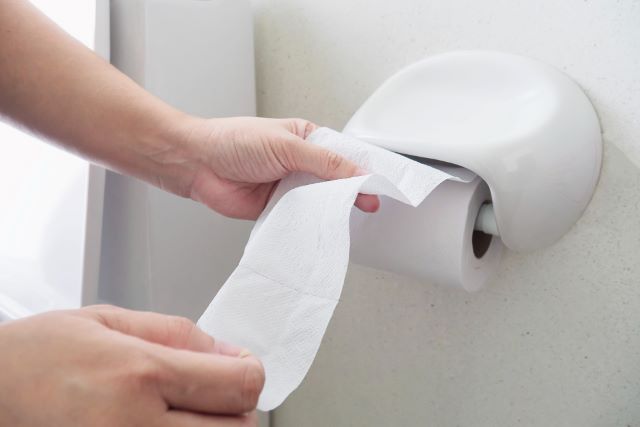

Culture
Where Is Toilet Paper Made ?
Toilet paper is an essential product in households worldwide, yet few people pause to consider where it originates. Surprisingly, most toilet paper consumed in the United States is produced domestically. According to CNN reports, over 90% of toilet paper found in American homes comes from U.S. factories. This article uncovers the manufacturing process, geographical distribution, and some challenges impacting the toilet paper industry.
1. How Toilet Paper Makes

Image by freepik
Toilet paper goes through these steps from raw materials to the final product:
- Getting Raw Materials: Wood pulp and recycled paper are the main ingredients for toilet paper. The industry uses softwood trees with fibers that create soft absorbent sheets.
- Creating Pulp: The materials go through a process to turn into pulp. This involves breaking down wood chips into a mix of fiber and water. This step plays a key role in shaping the quality and feel of the toilet paper.
- Making Sheets: Machines press and dry the pulp to form sheets. This often happens on big machines that can make huge amounts of paper in one go.
- Cutting and Wrapping: Once dry, the sheets are cut into rolls and wrapped up for shipping. Quality checks make sure the best products end up in stores.
- Distribution: retailers receive shipments of the packaged toilet paper, prepared to meet customer demands.
Understanding this process clarifies why most toilet paper is produced where demand is high and logistics are favorable.
2. Production by Geography
In the United States toilet paper is produced in 27 states with many factories. Some key areas include:
- Northeast: New York and Pennsylvania are among the manufacturing states, primarily because they are close to rich raw materials and large metropolitan centers.
- Midwest: Because many factories in the region also utilize transportation to distribute their finished products, numerous positions are available.
- South: The abundance of timber has led Southern states like Georgia or Alabama to play a major role in toilet paper manufacturingのindustry.
- West: While not nearly as clustered, factories based out of the western states help supply materials for the entire railcar production line and proficiently keep up with consumer demands on the West Coast.

Photo by Vie Studio/ pexels.com
3. Economic and Environmental factors
The toilet paper industry has economic significance and environmental explanation. There are different things to keep in mind like:
Economic Impact
Employment Generation: The manufacturing sector creates a large number of jobs. Employing skilled labor and providing the region with tax revenue, factories quite literally are the lifeblood of many local economies.
Similarly, the demand for toilet paper should be relatively inflexible since TP is a core product – even in recessions, people have to buy TP. It is also an important sector to keep an eye on because of its stability.
Environmental Concerns
- Sustainable practices: The industry is increasingly becoming more aware of sustainable practices such as responsibly sourcing raw materials and recycling paper. So the carbon footprint of many companies is being actively ameliorated through green-building practices.
- Water Usage: Toilet paper production remains a water-intensive activity. In manufacturing, Research is being conducted on original technologies and optimization methods to reduce water consumption as well as wastewater generation.
4. Impact of Global Events
The global events of late have put the toilet paper supply chain in the spotlight. For instance:
- Pandemic Panic Buying: record demand created shortages and supply chain interruptions in the COVID-19 pandemic Its a good example of the need to produce locally and potentially the risks of imports.
Changing Consumer Trends – With rising concerns over environmental issues, reflect a stark trend happening in consumer choice-making that is moving towards eco-friendly products. Manufacturers are failing to meet the demands of their customers — or should I say, ex-customers.In response, OEMs are beginning to adapt and innovate for this new breed of owner.

Photo by Anna Shvets/ pexels.com
Conclusion:
Though it might seem like a mundane good, toilet paper is made through a decidedly complex hours-long process that’s mostly proprietary to the U.S. Where this ubiquitous product gets made is a conundrum that speaks to the complexities of production, as well as about who pays the price — in money and carbon emissions. Toilet paper is and will remain a household staple in America, one buttressed by domestic production at 160 U.S. factories as the industry shifts to meet consumer preferences and global events. The future success of a market already embracing essentials like toilet paper is not just about keeping it on the shelves but also seeing the technical advancements take place to keep those choices cultivate responsible consumption patterns within populations.
-
Other5 years ago
School Found A Purse That Was Lost Back In The ’50s And It’s Like A Time Capsule For People Of The Generation
-
Funny5 years ago
Quarantine People Are Sharing Their Worst Bad Baking Attempts (30 Pics)
-
Lifestyle5 years ago
30 Times People Spotted Complete Jerks During The Coronavirus (Covid-19) Crisis
-
Other5 years ago
This Is How Military Food Rations Look From Different Countries (14 Pics)
-
Other5 years ago
30+ Rare Pictures That Reveal The Unseen Side Of Things
-
Science5 years ago
30 People Who Stand Out To Their Unique Genetic
-
Entertainment5 years ago
12 Side-By-Side Portraits Of People Over 100 With Their Younger Selves
-
Entertainment5 years ago
40 Fascinating Photos Of Rarely Seen Things
















